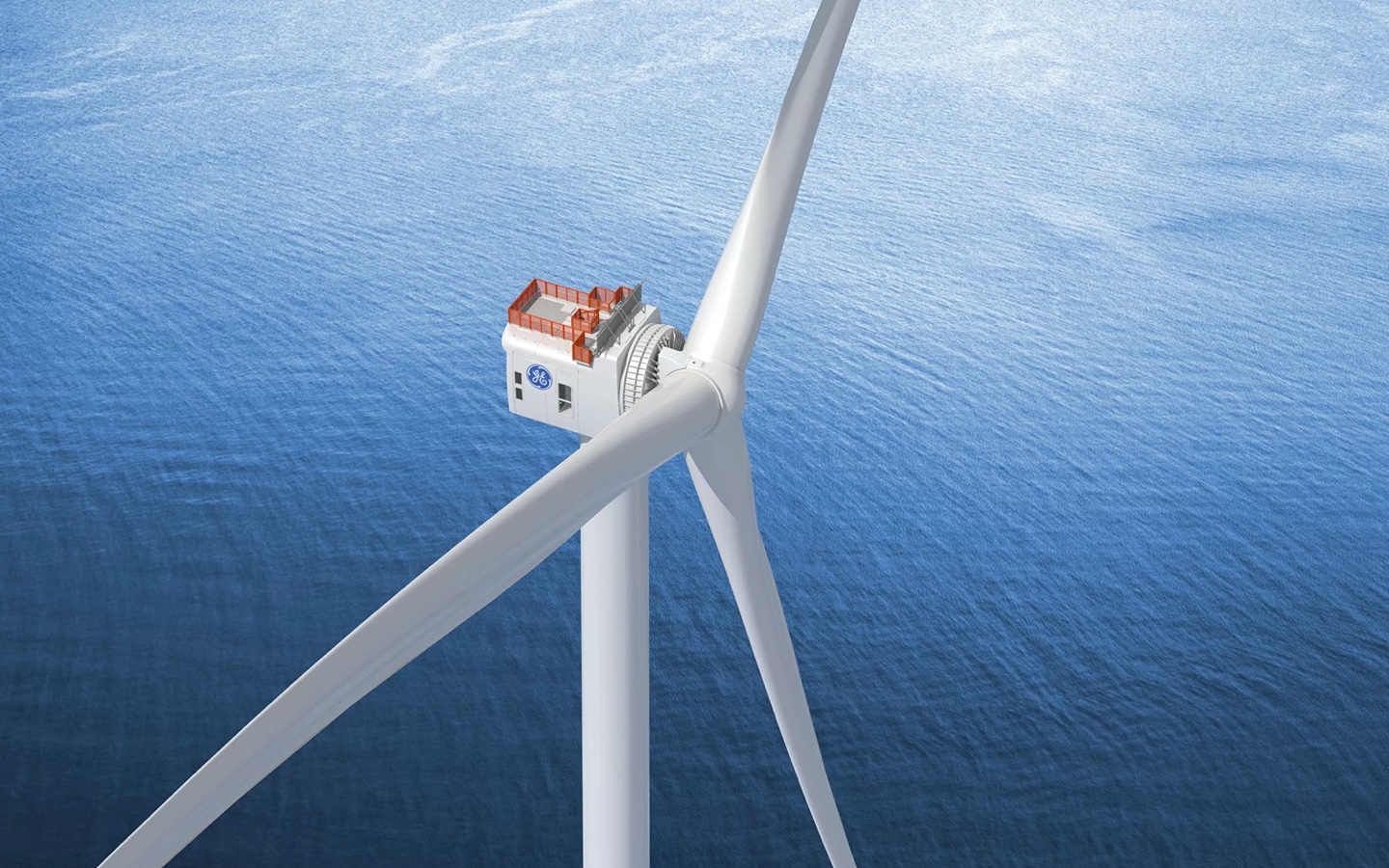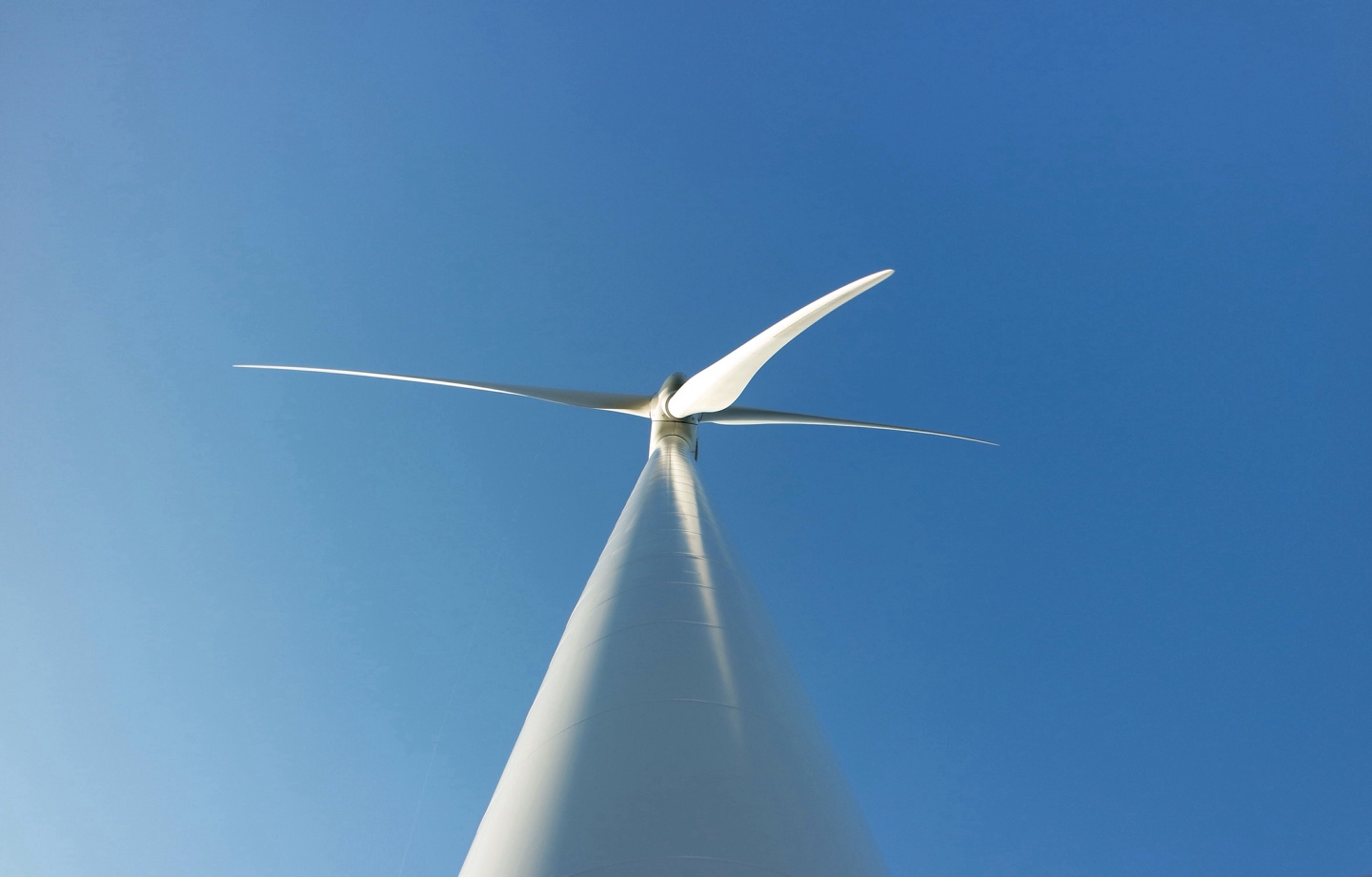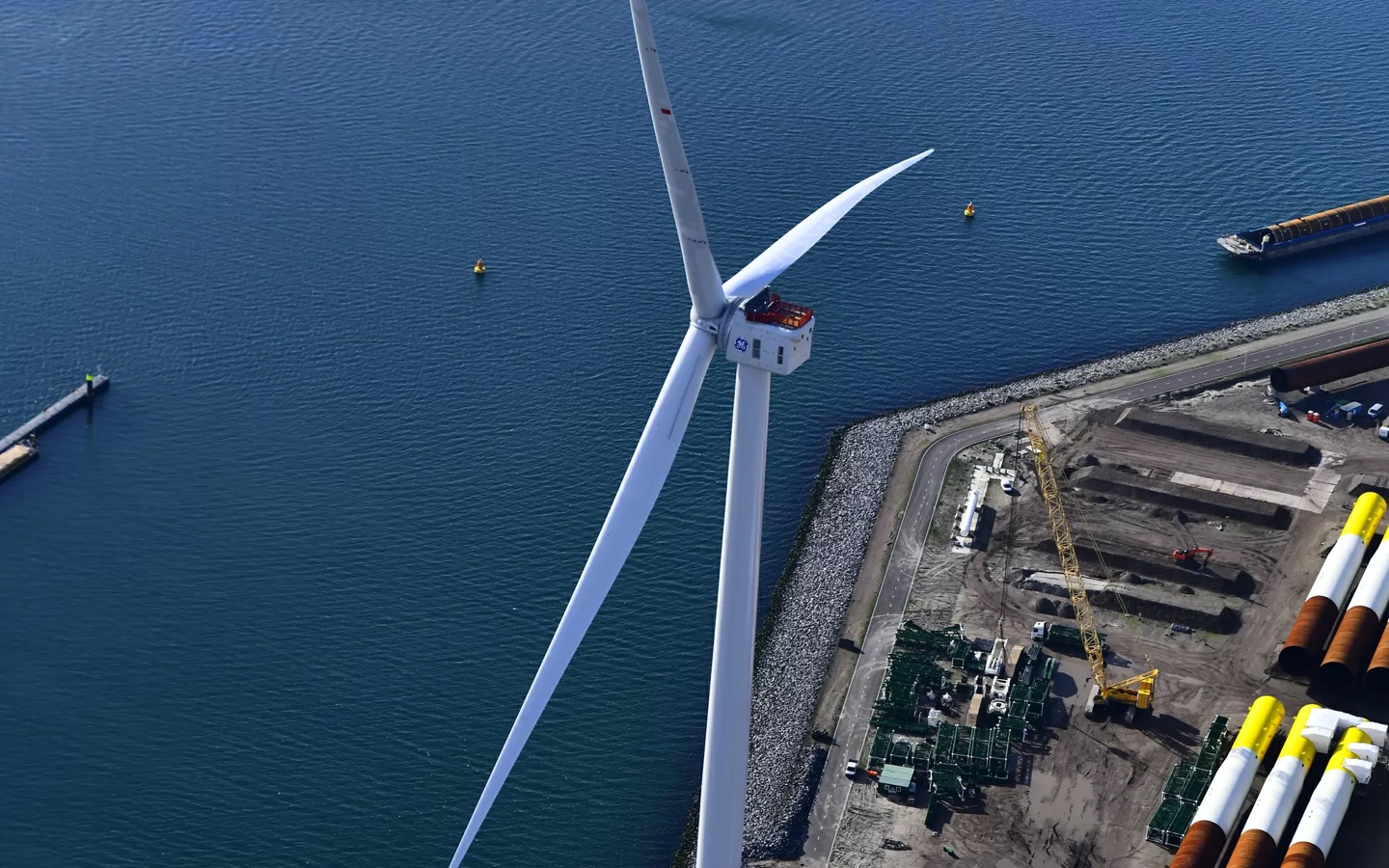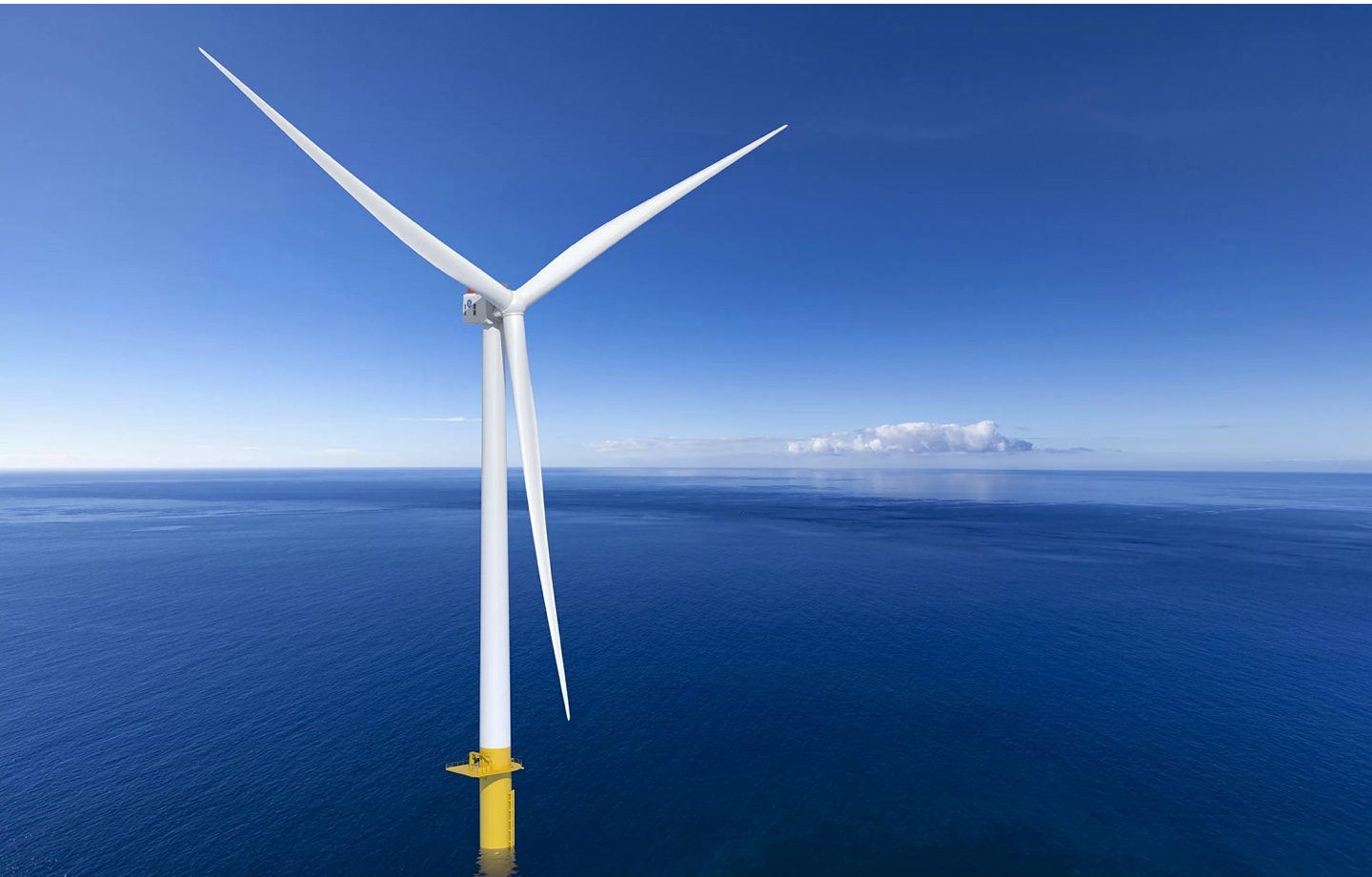GE created the biggest wind turbine yet — and they’re just getting started.
Once or twice each decade, an invention comes along that changes what we imagine to be possible. And in the wind energy industry, one such invention has arrived: A wind turbine so big you can’t capture it in just one photograph, with a reach so long, its arms could contain several football fields stacked atop one another. The Haliade-X — General Electric’s newest invention — is also laden with smart sensors and advanced data-capture systems. This new wind turbine is the most powerful of its kind and it’s located at sea, near a city in the Netherlands called Rotterdam.
Read more: Community-centered initiatives are bringing solar to our most marginalized communities.
Until recently, wind energy was considered to be fairly small potatoes in the energy economy; in 2018, it made up just 26% of global electricity generation, and it was fairly expensive to produce. But in 2020, a new analysis showed that using wind and solar energy is now cheaper than using fossil fuels to power our cities. Given this finding, President Biden has promised to install 60,000 new wind turbines and millions of solar panels in the U.S. over the next five years, as part of his $2 trillion climate plan.
The GE turbine prototype is part of the next wave of turbine innovation — especially because they’re taking their turbines to sea. GE’s design generates 30 times more electricity compared to the first offshore turbines built in 1991, according to the New York Times, which means it has the potential to power whole cities. Part of that has to do with its location. The wind at sea is stronger and more reliable, and there’s more space for these giant machines to live. But there’s still a lot we don’t know about wind patterns at sea, so the Haliade-X will also make use of supercomputers to help GE better understand air currents and wind resources.

Wind energy has a big sell. Using wind to power our cities could mean less reliance on environmentally costly fossil fuels like coal and natural gas, which are primarily responsible for the climate crisis. Wind energy, on the other hand, is sustainable and renewable — it doesn’t produce emissions or pollutants, so it has a very minimal environmental footprint. And, according to the National Renewable Energy Lab (NREL), offshore wind could potentially provide twice the amount of energy as the U.S.’s current electricity usage. GE has reported that just one rotation of the Haliade-X’s blades could power a single UK household for two days.
Increased investment is also contributing to industry momentum. The wind energy sector has exploded during the past decade due to local, federal and international efforts to reach net zero carbon emissions. Nearly $26 billion has been invested in offshore wind energy since 2010, and the turbine market is anticipated to increase by over $7 billion by 2024, according to the International Energy Agency. GE’s new invention will help to spur this along — selling off the energy from a wind farm could generate huge revenue margins for farmers.

Turbine innovation isn’t slowing down anytime soon, either. Other scientists are focusing on ways to remove the blades, replacing them instead with a pattern of spinning vortices. The Makani Airborne Wind Turbine, created by now defunct company Makani Technologies, can fly at altitudes of 1,000 feet, and, as a result, can capture powerful wind. Since the company’s closure in September 2020, it has made its entire patent portfolio, including software and designs, available for general use. And along Japan’s coasts, you’ll find tetrapods, which are wave breakers that prevent erosion and generate power.
There are barriers to implementing wind energy, though — and the main issue is space. Governments have struggled to provide information about where to build turbines and wind farms. Developing wind farms can also be expensive, and we don’t know much about wind farms’ impacts on vulnerable environments; turbines can be large, somewhat unsightly, and a bit noisy. One recent study created a map of global locations of renewable energy sites to provide insight into the footprint of this kind of energy development and assist with planning efforts.
Another common argument against adoption of renewable energy is job loss. If we move away from fossil fuels, will jobs be lost? The short answer is yes. And it’s already happening. The renewable energy industry has become a major U.S. employer — a recent report found that 3.3 million Americans are working in clean energy — which means they outnumber fossil fuel employees by 3-to-1. These jobs are likely to increase in number in the coming decade, too.
The upside is, many fossil fuel hubs are also well-equipped to house wind energy centers. According to an article from the Brookings Institution, “wind potential could benefit fossil fuel employment hubs in Texas, Oklahoma, Wyoming, North Dakota, New York, Pennsylvania, and West Virginia.” Not all lost jobs will be replaced, but there is an opportunity for local organizations, educational institutions, and the federal government to collectively help coal, oil, and natural gas workers move into the energy sector. Colorado and New Mexico’s workforce initiatives are leading examples. But providing proper support comes with a hefty price tag, and it remains to be seen whether state governments across the board are willing to put up the cash required to transition residents from fossil fuel jobs to those in clean energy fields.

Offshore turbines also need to be incredibly hardy to survive high winds at sea, and offshore climate patterns are still relatively unknown. Information gathered by Haliade-X’s supercomputers will hopefully aid researchers in predicting weather patterns.
GE’s newest invention is likely to pave the way for more innovation in collecting wind energy. But the bottom line is that wind energy holds enormous potential in mitigating the disastrous consequences of climate change. If we can power our cities with wind, we’ll be investing in a sustainable and affordable energy source and harnessing the resources that are already available to us.

Shop Pillows
The Essential Organic Pillow Collection
Gentle, breathable, non-toxic support.





